Labrador Tea Winter Medicine
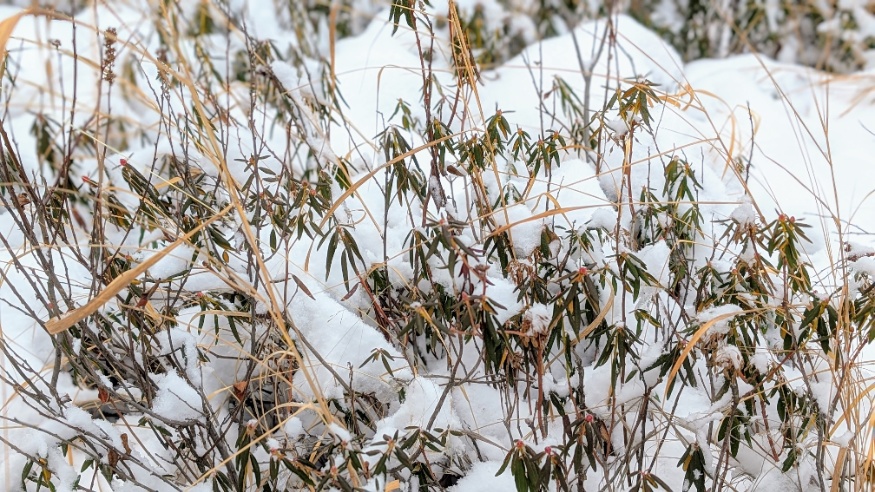
Labrador tea (Rhododendron groenlandicum) is a perennial evergreen shrub and powerful medical plant. Its name hints of where it was found and commonly used (Atlantic Canada), but Labrador tea grows in many parts of the Northern Hemisphere and has a long history of therapeutic and medical use. This is especially true amongst first Nations people and Europeans who used it extensively as a tea. It's commonly found in acidic peatlands, bogs, conifer stands and other wet areas of the boreal forest. It can also sometimes be found on drier mountain slopes and rocky stream banks.

Identification
Identified by thick evergreen leaves with edges curled under and woolly rust-orange undersides; these radiate up the stem in a whored fashion. Spherical flower heads at the top of stems open into white flowers from late spring to early summer. The leaves and seed pods persist through winter and crushing them releases the fragrant essential oils within.
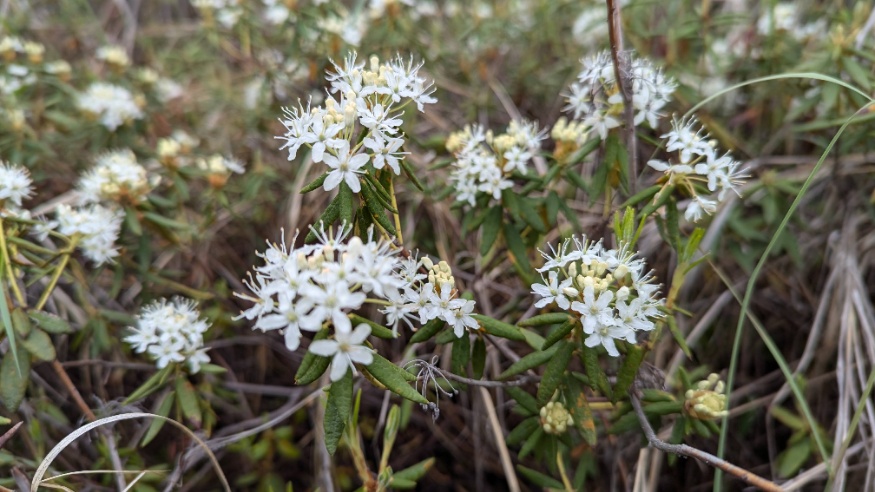
Harvesting All Year
Gather the a leaves or twigs in early spring or fall to use right away or dry it for later, but the plant can be harvested year-round. Flowers can be picked in the summer when they bloom. Harvest leaves by taking a few from different plants so as not to destroy their slow growing heads. One of the best things about Labrador tea is because it's an evergreen it can be easily identified harvested in the winter. Leaves and seed pods poke out of the snow, fragrant and potent as ever to be used for food and medicine. I find winter months to often be when Labrador tea is needed the most. Cold and flu in particular run ramped in homes and dried herbs from the warm season may not always be available. Labrador tea just happens to be an excellent choice for such situations, and besides filling a cup of hot tea this herb has countless other uses and benefits that we'll touch on below.
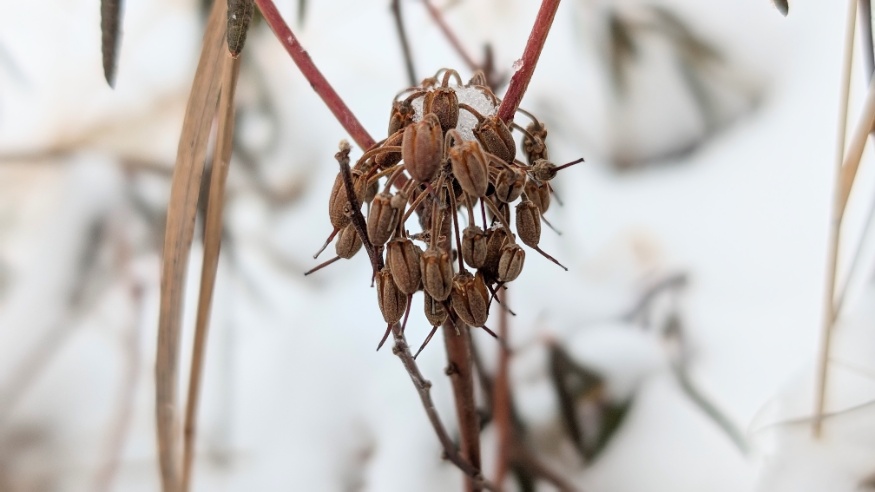
Cold and Flu
As mentioned, Labrador tea is a go to herb for cold, flu, and all the challenging symptoms that come along the ride. It helps with issues of the upper respiratory tract, calms Irritating coughs, even helping with asthma. When brewing a tea, try inhaling the steam in addition to drinking it to help clear the sinuses. The herb helps also to clear up chills and headaches, promoting perspiration to relieve fever. For those with the stomach flu, it helps calm diarrhea and upset stomach. It's also well known to promote a good night sleep, another challenge with cold and flu. Labrador tea is definitely one of the first herbs I think of when sick. Actually at the time of writing this article it is now winter; I have a terrible cold and have been drinking some dried Labrador tea I gathered in the summer to clear my sinuses and help me sleep, no joke!
Pain
Labrador tea is an analgesic, good for different types of pain, especially caused by inflammation. It works to reduce pain internally as a tea or tincture, or externally as a poultice, oil, cream, wash, or ointment. For example, it can be applied as a poultice or an oil to help reduce muscle pain, arthritis, and inflammatory conditions like rheumatism. It has also been used in the mouth to sooth teething pains for infants.
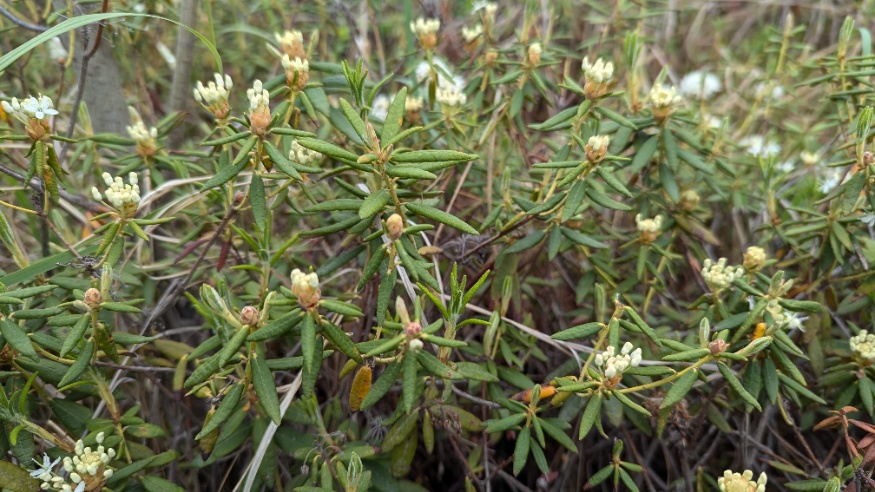
Skin Issues
The herb is good for all kinds of skin issues and deals with external inflammation as it does inside the body. This includes helping with burns, chapped skin, rashes, scabies, and itchiness. It can help relieve stings or bites from insects. The herb freshens skin by removing toxins; a hydrosol face wash can be made to help clear up blemishes.
Head and Scalp
There are multiple benefits to using Labrador tea on the hair and scalp. Native peoples used it to reduce hair loss and it benefits the scalp by helping with dandruff. Washing hair with a decoction of Labrador tea a few times a day (and left on) is a way kill or weaken head lice, similar to how tea tree oil works.
@naturewithus_ Harvesting medicinal labrador tea #herbalmedicine #cancer #naturalmedicine soft background music with piano string bells(1283463) - earbrojp
Other Uses
There are numerous other powerful benefits to this plant, here's a brief summary. As a mild blood purifying tonic, Labrador tea can be taken for general health of the body to stimulate the lymph nodes, regenerate liver health, and help remove toxins. The plant has also been used to treat tumors. Studies have shown twigs help fight against colon cancer, lung cancer, and acute myeloid leukemia. Labrador tea has a calming effect to help for relaxation and to control anxiety and winter depression. As a women's medicine it can help with period issues and urine problems. Labrador tea is anti-microbial and an antibiotic against various bacteria and yeast. It's therefore used for lung and eye infections. Many of Labrador tea's medicinal properties come from fragrant essential oils within, making it also good as a mouth wash to remedy bad breath. Natives used it to help with child labor. They also used it to treat Type 2 diabetes and research now confirms this. Some practical uses for the plant include infusing the leaves into an oil to make an insect repellent. Crushed leaves can deter moths, and rodents from food storage. The pigments of Labrador tea have been used to stain wood and dye wool.
Food uses
The dried herb can be ground into a powder to add an interesting flavor to foods, sauces, and salad dressings. It has been used by the indigenous and others to season meat, similar to mint or vanilla and can be a substitute for both. The leaves can act as a bay leaf substitute, releasing flavor into soups or stews. High in vitamin C, Labrador tea was used as a substitute for black tea and to prevent scurvy in pioneer times. It also contains high amounts of beneficial antioxidants which are good for overall health.
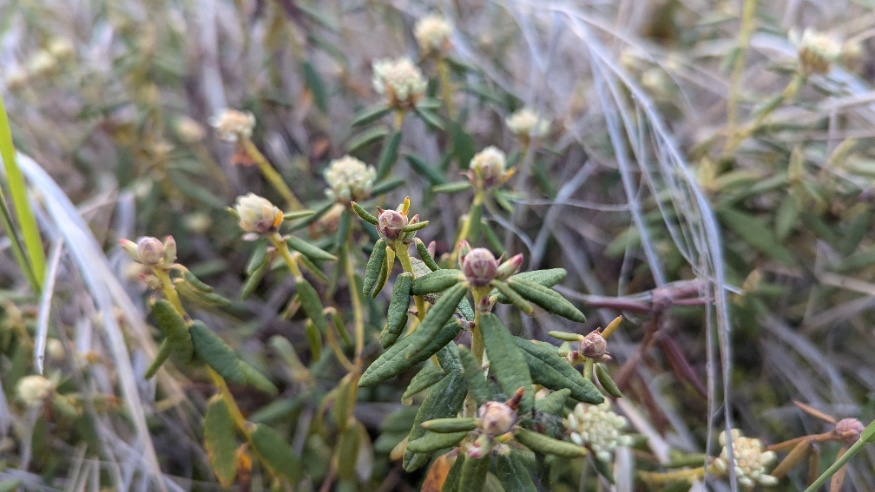
Precautions
Be sure to take Labrador tea in moderation. No more than two cups of tea per day and not for extended periods. Don't use if pregnant or if you have high blood pressure. It's quite potent and high in tannins that act to invigorate and detoxify, however this can backfire and become toxic if higher than normal amount are ingested. Common problems include diarrhea and even paralysis, so while Labrador tea can be very beneficial, be sure not to over do it.